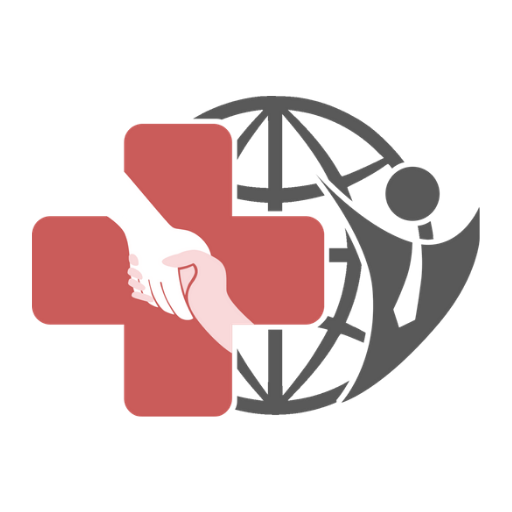You’ve always wanted to help others and make a difference in people’s lives. You can quickly recognize and analyze different types of problems and solve them. Your friends and family know you’re a quick thinker who’s also compassionate, so they weren’t shocked when you expressed interest in becoming a nurse.
If you’ve begun looking into getting your nursing license, you’ve probably come across many straightforward requirements like background checks and application costs. But there’s another prerequisite you might not be aware of: the NCLEX.
What is NCLEX?
The National Council Licensure Examination, commonly known as NCLEX, is a standardized test that nurses must pass to get their license to practice. Generally, there are two types of NCLEX exams. NCLEX-RN is taken to become a Registered Nurse, and NCLEX-PN is for Licensed Practical and Vocational Nurses.
The goal of NCLEX is to assess your nursing knowledge and verify your ability to safely practice your profession. Therefore, NCLEX evaluates your capacity to apply and analyze your nursing knowledge and is judged on your ability to make nursing decisions using critical thinking skills.
4 Major Client Needs
The NCLEX examination consists of four (4) categories with different subcategories. They are the following:
- Safe and Effective Care Environment
- Health Promotion and Maintenance
- Psychosocial Integrity
- Physiological Integrity
These categories and subcategories are also known as client needs. Understanding these categories will help you better manage your patients’ needs. Furthermore, studying the structure of the test and the subject areas from which the questions are drawn is incredibly beneficial when reviewing for the NCLEX exam.
Safe and Effective Care Environment
The first Client Need is the Safe and Effective Care Environment, which includes two subcategories. The first is called Management of Care, and about 17-23% of the NCLEX-RN exam questions are about this. Advanced Directives, Advocacy, Case Management, Client Rights, Concepts of Management, Confidentiality, etc., are some of the nursing actions covered in this subcategory.
The second one is the Safety and Infection Control, accounting for 9-15% of the exam questions. Accident prevention, error prevention, hazardous materials, surgical asepsis, standard precautions, and restraint use are all nursing acts within this category.
Every nurse must recognize their role and obligation to give excellent service to meet or surpass patients’ expectations. A patient-centric mindset and treating patients as the people your business wants to help establishes a foundation for excellent medical customer service.
Health Promotion and Maintenance
Health Promotion and Maintenance is the second client need category. About 6–12% of the exam is composed of these questions. The Aging Process, Ante/Intra/Postpartum and Newborn Care, Developmental Stages and Transitions, Disease Prevention, Health Screening, Lifestyle Choices, Physical Assessment Techniques, Health Promotion Programs, High-Risk Behaviors, and Self-Care were among the nursing acts explored in this category.
The Integrity of the Mind
Psychosocial Integrity is the third client needs category. Any shift in adaptive and coping responses could lead to ineffective thinking, speaking, feeling, and acting methods. You must be able to anticipate, recognize, and analyze these types of reactions while treating clients with psychosocial problems.
This category takes around 6 to 12 percent of the exam. Examples of topics in the exam are Coping Mechanisms, Grief and Loss, Behavioral Interventions, etc.
The Integrity of the Body
In this last category, there are four subcategories:
- Basic Care and Comfort
- Pharmacological and Parenteral Therapies
- Reduction of Risk Potential
- Physiological Adaptation
Basic Care and Comfort mean giving comfort and aid in everyday activities and account for 6-12% of questions in the exam. Assistive Devices, Elimination, Mobility, and other nursing acts are listed in this subcategory. The second one is called Pharmacological and Parenteral Therapies which accounts for 12-18% of questions in the exam.
Reduction of Risk Potential consists of 9-15% of the questions in the exam. In addition, diagnostic Tests, Laboratory Values, and other nursing actions have been tested. Physiological Adaptation accounts for 11-17% of questions in the exam, and topics like Hemodynamics and Fluid and Electrolyte Imbalance are most likely to be on the exam.
How is NCLEX Administered?
Computer Adaptive Test or CAT is an interactive testing method used to administer NCLEX exams. After answering each question, the computer will re-estimate your nursing knowledge and ability based on your responses and the difficulty of the questions. The CAT guarantees that the tests are not “too easy” or “too difficult” for your skill level.
Additionally, the system is designed to give you a 50% chance of answering the questions correctly. Furthermore, the computer can determine your degree of proficiency by continuing to do so throughout the test.
It can be intimidating to consider taking an exam that is entirely unfamiliar and is administered by a computer program. The good news is that computer-adaptive tests have several advantages if you plan to take the exam.
One benefit of using CAT approaches is that they provide a more accurate picture of candidates’ skill levels. Computer adaptive testing is reportedly far more accurate. Your first item will be simple—below the required level of knowledge. If you get it right, the machine will ask you a slightly more challenging question. If you respond incorrectly, the computer will choose a significantly easier question.
Moreover, computer-adaptive tests are more interesting than conventional assessments. Each question should fall within your capabilities because you are given questions based on your skill level. This keeps applicants from getting overwhelmed or bored.
Lastly, computer-adaptive tests are much more straightforward than conventional tests. For example, the NCLEX was only given twice a year before becoming a computer-adaptive test.
Passing Outcome
Unlike many other examinations you’ve taken, a passing NCLEX score does not represent a percentage like 70% or 80%. Instead, the NCLEX only gives you a pass or fail grade. So, what exactly does a “passing” score imply? First, a passing score indicates that you have met the success criteria for a newly licensed nurse.
A passing NCLEX score demonstrates to you, your State Board of Nursing, and the general public that you have satisfied the competency requirements for registered nursing. In addition, it signifies you’ve proved your ability to provide safe nursing care at the RN level.
Are You Ready?
The NCLEX exam can be overwhelming, primarily if you have only heard about it for the first time. However, passing it is not impossible. If being a nurse abroad is your ultimate aim, the NCLEX will be another obstacle to overcome before you reach the finish line. Nevertheless, you’ll be pleased to have the opportunity to accomplish top marks with the correct preparation and education.
Ready to pursue your nursing career in the US? Intermed Transcontinental Staffing is here with the foremost goal of assisting you and other fellow nurses to work and migrate to the United States. So send us your application, and let’s start your American Dream with Intermed here and now!



